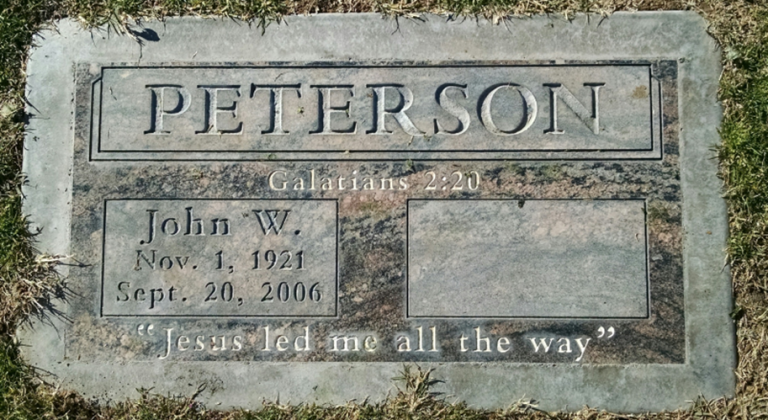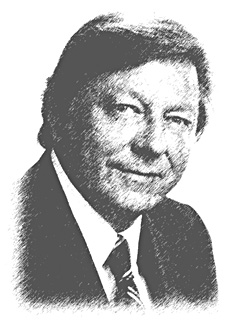Hymn History: Surely Goodness and Mercy & Authors: John W. Peterson and
Alfred B. Smith
“This song was born … emphasizing God’s goodness and mercy as well as God’s guidance through cold nights and lonesome valleys. It’s such a fun song to sing!”
(TheScottSpot)
“It has been a great joy over these many years to be able to take some manuscript paper and turn it into something that glorifies God or presents the gospel to others.”
(John W. Peterson)
The Origins of the Hymn “Surely Goodness and Mercy”
Few hymns capture the assurance of God’s presence as beautifully as “Surely Goodness and Mercy.” Written in the mid-twentieth century, this hymn quickly found a home in congregational singing and remains cherished for its comforting message drawn directly from Psalm 23. Its origins tell a story of collaboration, biblical inspiration, and a melody that continues to inspire peace and trust among believers.
Inspiration from Psalm 23
The hymn takes its title and central refrain from Psalm 23:6: “Surely goodness and mercy shall follow me all the days of my life: and I will dwell in the house of the Lord forever.” This verse, one of the most beloved in all of Scripture, concludes David’s psalm of the shepherd’s care. The assurance that God’s goodness and mercy accompany His people through every season of life has been a source of comfort for centuries.
In the 1950s, two men—John W. Peterson and Alfred B. Smith—sought to put this assurance into song. They believed that Scripture set to music could be remembered more easily and sung with devotion in the lives of everyday Christians. Their hymn, “Surely Goodness and Mercy,” distilled the timeless message of Psalm 23 into words and melody that could be carried by congregations everywhere.
The Writers: John W. Peterson and Alfred B. Smith
John W. Peterson (1921–2006) was a prolific songwriter, choir director, and composer of gospel music. A U.S. Army Air Corps veteran of World War II, Peterson went on to study music and became one of the most influential voices in evangelical church music during the 1950s and 1960s. He wrote or co-wrote more than 1,000 songs, as well as numerous cantatas and musical works that were widely used in churches. His style combined memorable melodies with lyrics that reflected both simplicity and theological depth.
Alfred B. Smith (1916–2001), often called Al Smith, was a gospel musician, evangelist, and later a music publisher. He had a keen sense for the needs of local churches, and his writing often centered on themes of encouragement and devotion. Smith and Peterson collaborated on several works, but “Surely Goodness and Mercy” became one of their best-loved creations.
The Birth of the Hymn
The hymn was first published in 1958 in a gospel songbook. Peterson composed the music, while Smith contributed significantly to the text. Their intent was simple: to bring Psalm 23 to life in song so that worshippers could both memorize Scripture and be reminded of God’s promises each time they sang.
The hymn’s refrain directly quotes the King James Version of Psalm 23:6, ensuring that its biblical foundation was unmistakable. The verses expand upon the theme of God’s shepherding care, speaking of His leading, guidance, and provision in life’s journey.
Its melody is warm, lyrical, and easily singable, which helped it spread quickly in congregations. The refrain’s rising notes on the words “Surely goodness and mercy shall follow me” seem to musically illustrate the certainty of God’s promises.
Popular Reception
Upon its publication, “Surely Goodness and Mercy” became a staple in evangelical hymnals and gospel songbooks. It was often sung in revival services, youth gatherings, and Sunday morning worship alike. Its themes of God’s guidance and constant care resonated with congregations in both urban and rural settings.
In the decades since its introduction, the hymn has been recorded by numerous gospel quartets and Christian artists, further spreading its influence. It became a particular favorite in Southern gospel circles, where its blend of scriptural text and accessible melody fit naturally.
Enduring Message
The enduring popularity of “Surely Goodness and Mercy” rests on its simplicity and the timeless truth it proclaims. For many, Psalm 23 is the first passage of Scripture memorized in childhood and often the last remembered in old age. By setting these words to music, Peterson and Smith ensured that believers could carry the comfort of the psalm in song form throughout their lives.
The hymn also reflects a broader movement in mid-twentieth-century American evangelicalism: the desire to bring Scripture directly into song for use in everyday worship. This period saw a flowering of gospel music intended to be both memorable and doctrinally faithful. “Surely Goodness and Mercy” exemplifies that balance.
Conclusion
The origins of “Surely Goodness and Mercy” lie in the meeting of two gifted hymn writers who shared a vision of making Scripture singable. Drawing directly from Psalm 23, John W. Peterson and Alfred B. Smith crafted a hymn that has endured for more than sixty years, offering comfort and assurance to countless worshippers.
Though simple in form, the hymn carries profound truth: that God’s goodness and mercy are not fleeting but constant companions throughout the believer’s life. In times of joy and in seasons of trial, Christians continue to sing its words, echoing the psalmist’s confidence that they will dwell in the house of the Lord forever.
Related
Sorry, no records were found. Please adjust your search criteria and try again.
Sorry, unable to load the Maps API.


